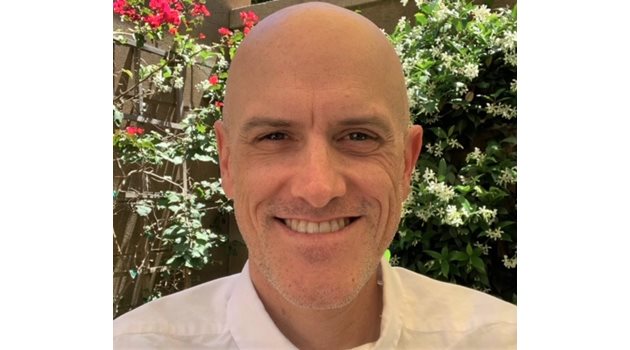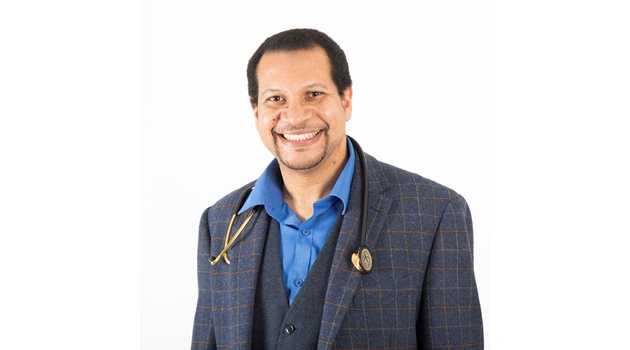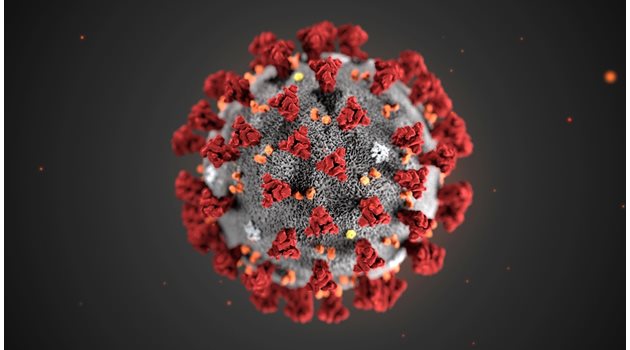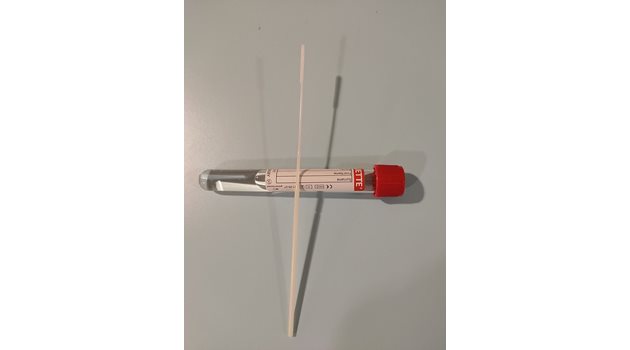Dr Kenneth Day and Dr Philip McMillan: Dr Chetty has treated over 4,000 severe Covid patients
With mast cell inhibitors, montelukast, and prednisolone he has not lost a single patient
The PCR cycles have become a central problem to determining who is truly infected or not
Altogether, the Covid Plan B group has synthesized a cohesive hypothesis and believe that affordable and ubiquitous treatments exist that can save lives. James Lundeen in particular has investigated the role of thrombosis, fibrinogen levels, and vitamin D that are also in tune with the model hypotheses by Dr Philip McMillan and Dr Kenneth Day. Dr Ivo Koutsaroff has been monitoring the pandemic particularly in the populous country of Japan including the relevant research there, Dr. Knut Wittkowski has monitored variant and waves of the pandemic, Nicole Eisenhauer is an expert on mast cell disease and its central role in covid, and last but not least is Dr Ingo Fricke who has studied the vaccines and vaccine design, and is an advocate of mucosal vaccination. In fact, Ingo and a colleague Dr Scott Freeman collaborated a year ago on why using a spike-only vaccine design could be less effective because of selective pressure on this region of the viral genome. I believe the Covid Plan B group is uniquely adapted and like-minded in its efforts to present an alternative approach and perspective on the pandemic and many people around the world are listening. I have heard from dozens of supportive scientists, clinicians, and armchair scientists who love discussing how we can all fight against this virus and also fight for open debate about the best ways to save lives.
Dr Kenneth Day
Kenneth Day received his PhD in cell and developmental biology at the University of Texas Health Science Center in San Antonio. At the first stage of his career, he focused on animal models and the biology of ageing. For the second stage in the last decade, he focused on genomics, epigenetics, and the role of DNA methylation in aging, disease, and autoimmunity. More recently, Kenneth entered biotechnology R&D to develop new epigenetic and genomics tools.
At the beginning of the pandemic, Dr Kenneth Day started to notice some of the cellular biomarkers of severe covid which led to the hypothesis that covid disease involves an allergy-like response resembling hypersensitivity pneumonitis. Successful clinical practice has verified that treatment of severe patients early with inhibitors of mast cells and montelukast can prevent progression of severe disease and save lives. Other scientists and clinicians began to notice similar effects. Kenneth helped to publish this early hypothesis last year in April 2020 and formed a small team of clinicians and researchers to publish a perspective and review manuscript [1], [2]. As part of the Covid “Plan B” consortium, Kenneth also shares very like-minded perspectives with the others in this group including Dr Philip McMillan.
[1] https://doi.org/10.3947/ic.2020.52.3.335 (A Pathophysiological Perspective on COVID-19's Lethal Complication: From Viremia to Hypersensitivity Pneumonitis-like Immune Dysregulation)
[2] David W Moskowitz, Marcos A Sanchez-Gonzalez, Edmund R Marinelli and Kenneth Day, Quercetin for COVID19?. Diabetes Complications 2020; 4(2); 1-2.
Dr Philip McMillan
Dr Philip McMillan is a Consultant Physician in the NHS, UK, with over 25 years of medical expertise. For over a year, he has conducted research to improve the understanding of COVID-19. In April 2020, he proposed that severe disease is an immune response triggered by the virus. Since then he has co-authored and published two papers [3], [4] outlining this theory and providing a comprehensive explanation of the symptoms associated with COVID-19. He is working towards carrying this research forward with the support of a team of international experts.
Dr McMillan is also an international keynote speaker on dementia, having presented at conferences in Singapore, Japan, Italy, Ireland, UK, Canada and China. He recently proposed a breakthrough theory on the pathology of dementia and has developed deep insights into brain function and strategies to protect memory.
[3] Philip McMillan, and Bruce D. Uhal, COVID-19–A theory of autoimmunity to ACE-2, MOJ Immunol. 2020; 7(1): 17–19.
[4] https://doi.org/10.3389/fimmu.2021.582166 (COVID-19—A Theory of Autoimmunity Against ACE-2 Explained)
- Dr Philip McMillan, Dr Kenneth Day my questions are to both of you. Dr McMillan has a very interesting theory that explains why some people have a severe or fatal COVID-19, could some of you, explain it in more detail as for the general public what is the hypothesis of autoimmunity?
- The theory of autoimmunity is based on the presence of elevated levels of serum ACE2, which is a secreted form of the ACE2 receptor found on respiratory cells and blood vessels that the SARS-CoV-2 virus must use to gain access into cells during infection. Elevated serum ACE2 in patients correlates perfectly with comorbidities that are associated with severe disease. As the accumulation of virus bound to serum ACE2 is processed by immune cells that consume these complexes in the blood and in the lungs. Protein fragments of these complexes (viral spike protein and serum ACE2) are presented on receptors to specialized immune cells called lymphocytes. The lymphocytes get confused between the ACE2 protein and the viral spike protein which causes the immune system to mistakenly attack healthy cells that express ACE2. These healthy cells in the lung blood vessels are targeted by autoantibodies to ACE2 causing severe lung vasculitis (inflammation of the lung blood vessels) and lack of oxygen to the rest of the body.
As antibodies increase to fight the viral infection, the body turns toward autoimmunity where the immune system starts to attack the lungs, thus leading to breathing difficulty (dyspnea) and small blood clots in the lungs (microthrombi). This is perfectly in line with my own hypothesis whereby there is triggering of type 2 and type 3 hypersensitivity reactions caused by antibody complexes (antibodies called IgM and IgG). Philip’s hypothesis has been confirmed among newly published studies showing auto-antibodies after COVID-19 infection. My observation was the role of eosinophil depletion from peripheral blood and into the lungs with severe patients during the type 2 hypersensitivity response. Eosinophils and mast cells are responsible for the release of histamine and very damaging activity that almost resembles an asthma attack. Interestingly, asthma is not among the comorbidities associated with severe covid as it is likely that asthmatics may use their inhalers to treat it. Dr Shankara Chetty in South Africa has treated over 4,000 severe Covid patients with mast cell inhibitors, montelukast, and prednisolone and not lost a single patient! He has noticed that severe disease begins around day 8 after initial infection symptoms and can time treatments precisely so that patients do not enter a state of respiratory distress and never got severe COVID-19, even though some of the patients did get low blood oxygen levels.
- Can some drugs and/or vaccines help these people to prevent the severity of COVID-19 and why?
- Mast cell inhibitors such as Pepsid AC, Singulair, and prednisone are part of Dr Chetty’s successful practice that does not include supplemental oxygen or admission to the hospital. In addition, quercetin, natural dietary supplementation and healthy levels of vitamin D3 could impact whether someone could develop severe disease. Vaccines should help to reduce the severity, but as new circulating variants arise, it is possible these vaccines will not be able to work as effectively. In fact, vaccines that rely upon protein fragment presentation with the spike protein alone are missing complete immunity compared to natural infection. New, more complete vaccines may be required such as mucosal vaccines that rely upon the generation of antibodies in the nasal passage called secretory IgA. With current vaccines, there is also a question about transmission. There are many loose ends that we still do not understand and it is difficult to study the effectiveness of ANY treatments WHILE the pandemic is raging. But by far, we are in much better shape over a year into the pandemic, and far better treatments are coming together, they simply need standardization and the treatment protocols need to be shared among many countries.
- What do you think are the big mistakes in fighting the coronavirus? And how can they be adjusted to be able to improve the early treatment and to prevent deaths in the elderly or for people with comorbidities?
The biggest mistakes are believing that expensive pharmaceuticals are the only answer. As an example, Dr Chetty provides medications to his patients prior to day 8 (the key 8th day after symptoms start) and prepares them in case their body starts to develop severe symptoms. The Plan B group believes the mast cell is central for early treatment. It is important to be ready on day 8 and closely monitor symptoms in those with the greatest risk for severe Covid due to existing comorbidities.
Another major mistake was not studying the impact of the virus on the body in the asymptomatic phase of the disease. This could only have been done through routine autopsies on members of the general public who died with asymptomatic infection. An opportunity to improve the understanding of the early phase of the disease still exists.
- What do you think about PCR tests? According to some studies, the number of cycles should be 28, not 35, and in fact, this is the reason there are so many that are assigned as "infected". And that most if not all asymptomatic people were not infected or not infection carriers or they are not spreaders at all. Why they set to use 28 cycles for PCR tests for vaccinated people and 35 cycles for non-vaccinated.
- Cycles of 28-29 represent about 10,000 copies of viral RNA. Every 3.3 cycles represents an order of magnitude, ie 32 cycles == 1000 copies, 35 cycles == 100 copies. It is unknown what this means with respect to infections particles of virus.
In fact, some studies have tried to correlate viral particle infectivity in cell culture with cycles of PCR and this varies depending on what tests are used. In fact, in March the Association of Molecular Pathology (AMP) that helps to set CLIA and CAP guidelines for molecular diagnostic tests said this: “Due to the myriad of analytical and clinical factors known to impact Ct [PCR cycles] values, CAUTION IS ADVISED when applying published correlations of Ct values with disease severity or as a predictor of active infection and hence transmissibility.” This publication also reported that different EUA approved tests showed up to 14 cycles difference on the same clinical control samples, while reproducibility of the control samples on the same instrument could vary up to 10-fold. The PCR cycles have become a central problem to determining who is truly infected or not. It is possible that asymptomatic represent individuals that had cross reactive immune responses and were never “sick.” It is also difficult to understand how asymptomatic infection can spread as typically it requires coughing, sneezing, or tactile spread. This is why the mask debate has become so intense. There are papers showing great percentages of potential asymptomatic spread and some showing that there are none. The decision to alter PCR cycle thresholds by the CDC is very unfortunate as now this will redefine what is a “case.” The same number of cycles regardless of vaccination should be set as this will create incredible confusion. We want to understand vaccine effectiveness and to alter our standards could be our misfortune especially in light of new circulating “breakout” variants. There is still a lack of clarity on the effectiveness of vaccines against variant B.1.1.7 or 20I/501Y.V1, also called VOC 202012/01 (it was detected in November 2020 in UK and it quickly emerged in other countries) and variant B.1.617 (the variant originally identified in India). A recent report stated that vaccines may be 7-fold less effective against B.1.617. But much still remains to be studied.- Do you have an explanation for why the world does not work on nasal vaccines? Isn't this the more logical way to achieve lung immunity? Doesn't the path lengthen through the muscles by using intramuscular vaccines?
Mucosal vaccines make a lot of sense for a respiratory virus. In fact, studies of SARS in mouse models showed that for animals in which the virus was first active within the nose, it allowed the lungs to prepare to fight the infection effectively. If the virus was inhaled directly into the lungs and bypassed the nasal passage, the infection was much more severe. Trapping and developing secretory IgA could be much more helpful. Delivery into the muscle relies upon the circulation and presentation of most of the expressed mRNA from antigen-presenting cells near and around the injection site.
- Why and how to establish antibody tests to prevent reducing the immunity of people who has it already?
This is a vital question! There are some antibody tests published in Lancet recently that appear to be very reliable. These verify that an active immune response was mounted against the virus. Unfortunately, there are not enough reports across the population of people receiving antibody titers after vaccination, but reports are emerging. In many ways, we do not know how the vaccines behave in everyone because we do not monitor.
Recently, a company called Adaptive Biotechnologies launched a test called “T Detect” that can tell you if your T lymphocytes (cells just as important or more important than the cells that make antibodies which are called B cells) have “seen” virus. T cells develop a memory when they have seen the virus and this test can detect T cell receptor rearrangements that will have the ability to attack the virus. Antibodies are known to decrease with time after infection, so testing for memory cells that were made during infection can tell you if your immune system can protect you when reexposed to the virus again.
- For which autoimmune diseases is vaccination, not a problem and for which can it be a problem? How to travel those who can not be vaccinated?
There is still debate about the vaccination of those with autoimmune disease. Interestingly some of the repurposed drugs for Covid such as tocilizumab are used to treat autoimmune disease (although they have shown to not be that effective). My mother (Kenneth) has a severe autoimmune condition and is immunocompromised due to her therapy, and she had a SARS-COV-2 infection. I monitored her during the course of the infection, but she recovered very well except for persistent anosmia after 5 months. I think it is really unknown how the vaccine will behave across the population.
I would say travel is not recommended for anyone considering the pandemic is raging with new variants emerging where we do not know how the vaccines will behave. However, knowing that the disease can be treated successfully when severe symptoms appear, the successful treatment protocols need to be dispersed across the world to make sure the disease is treated effectively.
- What do you think about vaccinations for children?
Unnecessary for most. Children are the least at risk over all the rest of the population. The original indications for some of the vaccines clearly state they are not designed for below the age of 16. Interestingly, there is not much discussion about or vaccination of the elderly. The elderly are at the greatest risk of both severe disease AND adverse response to vaccination (see studies of animal trials with SARS vaccines). For this reason, I think it is also recommended by the vaccine companies not to vaccinate above 65 in the documentation. Surprisingly, the most fatality from the virus occurs above even this age range. This is intriguing because the vaccines are meant to stop severe disease and hospitalizations and the age group above 65 is where the most fatalities occur. Children generally have a low risk of severe COVID-19. This is explained by the autoimmune hypothesis in that children have low serum ACE-2 levels. There may be a small number of children with specific comorbidities making them more vulnerable but this can be identified and in specific cases use targeted vaccination. Exposing all children to potential medium or long term risk of vaccination could not be considered to be in their best interest.





































